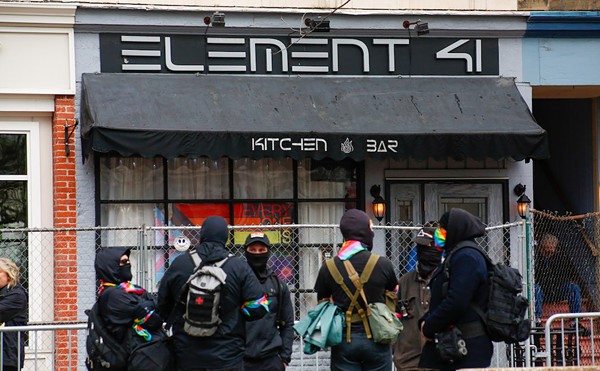On March 10, a building in the Lake Erie Correctional Institution was flooded with toxic fumes after a fresh-air supply-fan broke, causing most inmates in the building to complain of headaches and nausea.
After hearing the complaints from approximately 75 percent of inmates in the building, the prison's staff evacuated the building and fixed the fan, but not before several inmates had to be taken out to the prison's medical wing on stretchers and treated for their illnesses.
Within days, Scene heard of the incident from two prisoners who were inside at the time. They called it evidence of staff incompetence. One even claimed, "Definitely probably gonna hit the news."
But the incident, much like the many other reports gathered by Scene from state officials and the two prisoners, did not hit the news.
In the past few months, Scene has obtained letters and emails from two prisoners and their families confirming fights, lockdowns and unsanitary conditions at the prison in Northeast Ohio, which became the first state prison to be sold to a private company when Governor John Kasich's administration sold the prison to Corrections Corporation of America (CCA) in 2011.
"CCA does not know how to run a state prison," a prisoner wrote to Scene. "Not only have I been told this by a few correctional officers, I have also noticed it myself. Just this week, I have been told by a number of the (special response team members) who came in to help in shaking this place down for contraband."
While concerns over the private prison and for-profit model have been raised since the deal two years ago, audits and inspections from the Correctional Institution Inspection Committee (CIIC), Ohio's independent prison watchdog, and the Ohio Department of Rehabilitation and Correction (ODRC) have detailed poor conditions and a rise in criminal and violent activity at the CCA-owned facility.
Today, critics like the ACLU of Ohio have seized on the reports as moments of vindication. In September, Mike Brickner, research director at the ACLU, told Scene that it was only a matter of time before conditions worsened and the state was forced to retract its commitment to privatizing public prisons.
"Unfortunately, what we have to wait for for the tide to turn is another round of safety issues at these facilities," Brickner said back then.
Based on the prisoners' accounts and independent reports, that tide may be turning now. But CCA has vigorously defended its commitment to LECI. In an email, CCA spokesperson Steve Owen highlighted positive findings in recent reports, including a reduction in gang activity, while glossing over the problems.
"We will continue to work with the ODRC and CIIC to meet any inspection-related goals that are slated for completion, and we remain committed to providing the best service possible for our government partners and the taxpayers they serve," Owen wrote.
Critics like Brickner are not buying it. As the bad news continues to trickle out of LECI, they're demanding the state government clean up the mess before the situation gets even more out of hand.
"Eventually, it is going to hit this tipping point, where something really, truly awful is going to happen, and then people will rush to try fix things," Brickner says. "But it will be too late at that point."
Privatizing violence
In February, Scene began receiving unsolicited letters and emails from an LECI prisoner and his fiancée, detailing what they labeled as "riots" and general chaos at the minimum- and medium-security prison.
"In my opinion, a lot of inmates' and correctional officers' too, the CCA needs to either learn to control a prison real, real fast or sell it back to the state, so the safety of the inmates isn't being put at risk anymore," the prisoner wrote. "This place is severely dangerous."
The prisoner and his fiancée spoke to Scene on the condition of anonymity.
Shortly after receiving the letters and emails, multiple official sources confirmed the reports of violence at LECI. On Feb. 22, the CIIC released a report detailing findings from a surprise inspection on Jan. 22, confirming a sharp rise in violence at the prison. Official incident reports later acquired from ODRC confirmed the specific fights to which the prisoner referred. ODRC specifically referred to the incidents as "fights," not "riots," as the prisoner called them.
The prisoner pinned the rise in violence on inadequate staff. He also suggested the prison might be trying to save money by keeping staff low.













